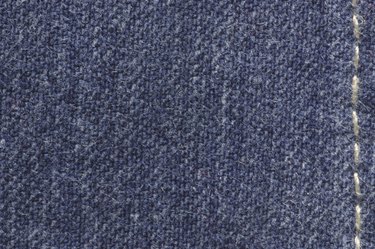
When it comes to sewing there are many types of stitches you can use. The type of stitch used will depend on whether you are sewing by hand or using a machine and whether you need your stitch to be functional or decorative. Some stitches that are looser are only meant to hold in place two pieces of fabric while they are being sewn together, while stronger and shorter stitches are meant to be durable and long-lasting.
Hand Sewing: Back Stitch
Video of the Day
The back stitch is by far the strongest and most versatile hand stitch in sewing. It is used for many purposes, including seams and top stitches. It can also be used on many types of fabrics, but works best with fabrics that have a visible even-weave. The back stitch is almost like going over each stitch twice in that the technique involves making a stitch backwards and then moving two places forward.
Video of the Day
Hand Sewing: Combination Stitch
The strongest hand stitch, the back stitch, can be combined with other types of stitches, depending on their purpose, to make them stronger. If you need to use a running stitch, for example, to gather, shirr or mend, you can reinforce it by making every third stitch a back stitch. You can also go back over a running stitch with a back stitch, which is called a half back stitch.
Machine Sewing: Stitch Length
The classic machine stitch, the straight stitch, is meant to mimic the hand stitch or the back stitch. Many types of sewing machine stitches can be very strong, and their strength depends more upon their length than the type of stitch. The shorter the stitch, the stronger it will be. Longer stitches are generally used as temporary stitches, while permanent stitches are as short as possible. The length of your stitch will also depend on the weight of your fabric.
Machine Sewing: Purpose
The type of stitch that will be the strongest and best for you on your machine will depend largely on your purpose, the type of fabric used and the type of thread used. The zigzag stitch is wider and is therefore better for thicker fabrics and sewing on patches and buttons. Overlock stitches are durable because they complete two types of stitching in one and can be adapted to the type of fabric.